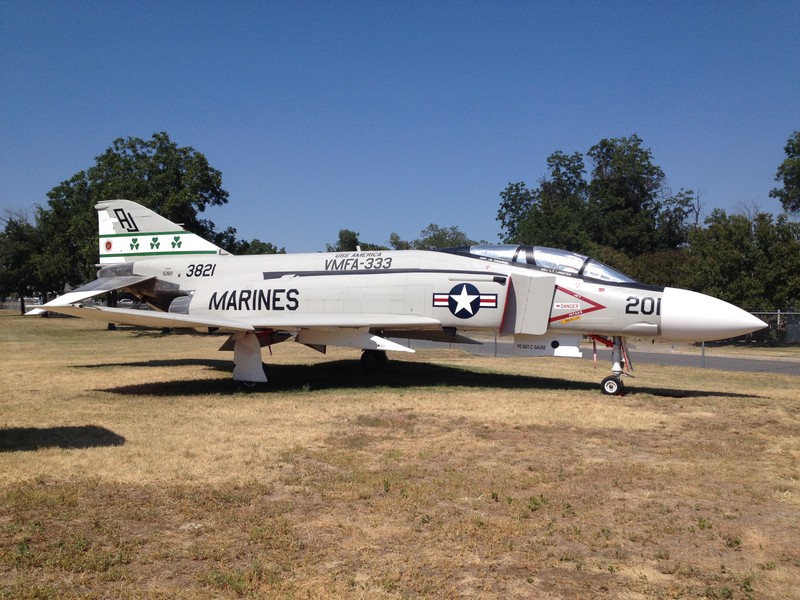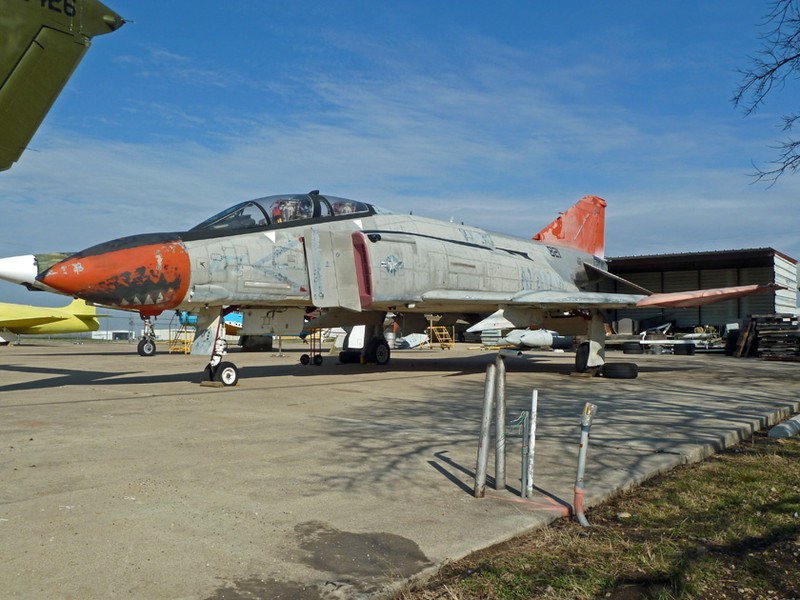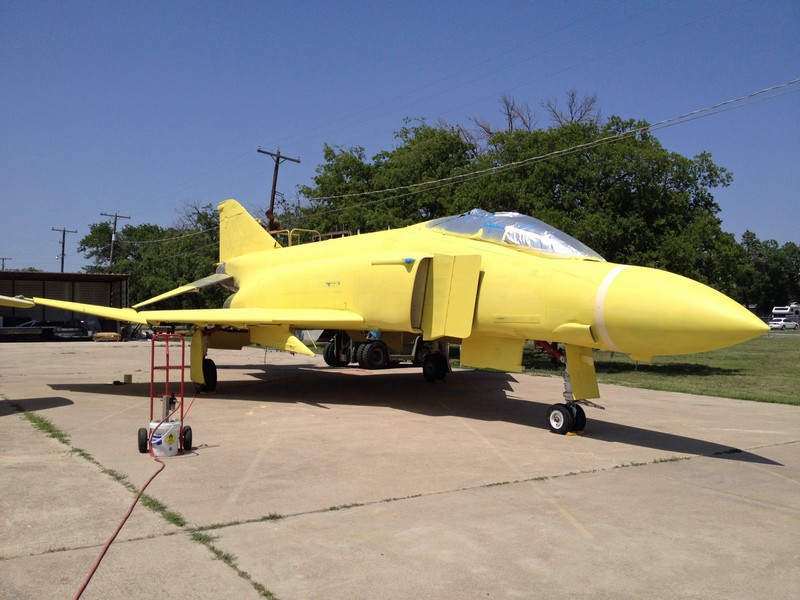McDonnell Douglas QF-4S Phantom II "Shamrock 201"
Introduction
Text-to-speech Audio
Images
QF-4S Phantom II "Shamrock 201" Fromerly "Scooby"

"Scooby" in transition.

Lemonade air force.

Backstory and Context
Text-to-speech Audio
The Fort Worth Aviation Museum has two F-4 Phantom aircraft. After a lengthy service career this one was converted into a target drone and was re-designated as a QF-4. However, it all began long before in St. Louis, Missouri, where it was built. McDonnell Douglas built this F-4J-30-MC and it was assigned Navy Bureau of Aeronautics Number 153821, c/n 2135. It had the service nickname “Rhino” and was the last Navy/Marine Corps F-4 to fly.
We are awaiting the official history from the Navy, but we know this aircraft served with:
- VMFA-451 “Warlords” 9/75 to 11/78 MCAS Beaufort with tailcode VM
- NARF NASCFS Naval Air Rework Facility Naval Air Systems Command Fleet Support 12/78
- VMFA-251 “Thunderbolts” 11/79 to 4/84
- Naval Air Rework Facility, Cherry Point, North Carolina, 5/84 to 9/84
- Back to VMFA-251 “Thunderbolts” 9/84 to 9/95
- VMFA-333 “Fighting Shamrocks” or “Trip Trey” 10/85 to 6/86
- VMFA-312 “Checkerboard” 6/86 to 11/86
- VMFA-212 “Lancers” 12/86 to 6/88
- VMFA-235 “Death Angels” 8/88 to 2/89
- Naval Aviation Depot, Cherry Point, North Carolina, 2/89 to 7/98. It was during this time that the aircraft was converted to a QF-4 drone (8/97)
- Naval Weapons Test Squadron, Point Mugu, Calif. 7/98 to 4/02
- Air Test and Evaluation Squadron 30 (AIRTEVRON THREE ZERO),VX-30, “Bloodhounds” at Point Mugu, California. 5/02 to 9/04. Aircraft Number 107.
- Reported to also have been operated by VFA-31 “Tomcatters” and flew combat missions over Vietnam from the USS America while with VMFA-333.
Although this F-4 was converted into a target drone or QF-4S, it did not get used for that purpose. This was the first aircraft acquired by the museum in 2004 and is on loan from the National Naval Aviation Museum (NNAM) in Pensacola, Florida. Locally, F-4s were operated by the USAF/USN/USMC at Carswell AFB and NAS Dallas. They were also operated by the Air National Guard and Air Force around the state of Texas.
Formerly known as “Scooby,” the F-4 was restored in October 2013 by members of VMFA-112 “Cowboys” from JRB Fort Worth. With financial support of the Trip Trey (VFMA-333) Association, the aircraft now looks like the F-4 flown by “Bear” Lasseter and “Lil John” Cumming’s 11 September 1972 after shooting down a 1.5 Mig-21s. The original Bureau of Aeronautics number 153821 was retained.
Sources
Fort Worth Aviation Museum
Fort Worth Aviaiton Museum
Fort Worth Aviaiton Museum
Fort Worth Aviaiton Museum
